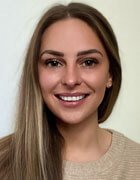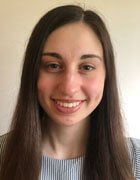
Ca-ssis/istock via Getty Images
Biosimilars set to surge as biologic patents expire
As key biologics near loss of exclusivity in 2030, biosimilars are expected to deliver major savings and drive $120B in market opportunities across the U.S. healthcare system.
As high-revenue biologics approach patent expiration, the biosimilars market has the potential for dramatic growth. Blockbuster therapies like Keytruda, Darzalex and Opdivo are set to lose exclusivity by 2030, creating a wave of biosimilar opportunities that could ripple through the pharmaceutical market.
"Biologics are projected to generate $120 billion in sales in the year prior to losing their exclusivity," Steve Callahan, Senior Director at MMIT, said in an interview. "This $120B opportunity stems largely from timing," explaining that biologics are granted 12 years of total market protection following FDA approval. This includes a 4-year period during which a biosimilar application cannot be submitted to the FDA, followed by an additional 8 years before that application can be approved.
As the exclusivity periods end for roughly 95 biologics over the next five years, biosimilar manufacturers are expected to face intensifying competition that could shake up the market and drive down costs.
As of April 2025, the FDA has approved 74 biosimilars across a wide range of therapeutic areas, including oncology, immunology, endocrinology and ophthalmology. Meanwhile, global market forecasts point to an accelerating growth trajectory. The biosimilars market was valued at $27.3 billion in 2023 and is projected to surpass $92 billion by 2031, representing a compound annual growth rate of over 16%.
A significant share of that expansion is expected to come from the U.S., but factors such as value-based payment models, formulary design and pharmacy benefit manager (PBM) vertical integration will play critical roles in shaping how quickly and widely biosimilar adoption can scale across healthcare systems.
Payment models limit uptake
Despite clear cost advantages and therapeutic equivalency, biosimilars face sluggish uptake in certain provider settings, particularly in physician-administered markets like oncology and rheumatology. One of the biggest barriers is the way physicians are reimbursed under Medicare Part B.
"Many physicians are reimbursed based on the average sales price of a product," Callahan explained. "If a biosimilar has a lower price, the physician would receive a corresponding lower reimbursement -- lowering the incentive to prescribe biosimilars."
To mitigate this disincentive, the Inflation Reduction Act included a temporary boost to Medicare's reimbursement for biosimilars. From 2022 through the end of 2027, biosimilars that are "highly similar" to their reference biologics and meet certain regulatory criteria are reimbursed at 100% of their own average sales price plus 8% of the reference product's average sale price, an increase from the previous 6%.
While that change is a step in the right direction, stakeholders say more work is needed to address adoption inertia, especially in areas where reference biologics still dominate formularies and provider preference. As of Q1 2025, biosimilar versions of adalimumab (the active ingredient in Humira) accounted for just 2% of U.S. prescriptions despite multiple launches in 2023, according to data from IQVIA.
PBM integration intensifies cost pressures
Now that clinical parity is established, biosimilars compete largely on price. Some have entered the market at discounts of up to 85% off the wholesale acquisition cost of their branded counterparts. This level of price-cutting is unique to generics and is virtually unheard of in other parts of the market.
"There is no consensus on biosimilar approaches in pricing," Callahan admitted. "Strategies heavily rely on research and analysis to understand key market dynamics and identify pricing sensitivities," meaning many manufacturers must walk a tightrope by offering steep discounts to gain traction while still recovering the high development costs of manufacturing biologics.
Meanwhile, PBMs have emerged as powerful gatekeepers. Through vertical integration with insurers and pharmacy arms, large PBMs are now steering market share toward their own private-label biosimilars.
Callahan pointed out examples like Quallent (backed by Cigna and Express Scripts) and Nuvaila (backed by UnitedHealthcare and Optum Rx), where payers are aligning incentives across their own subsidiaries to favor in-house biosimilar products.
"Each year, there is a growing trend of vertical integration among PBMs and health plans, allowing them to steer physicians toward their own biosimilars through preferential coverage," Callahan reiterated.
The lack of transparency in PBM rebates and formulary placement further complicates biosimilar competition. Manufacturers offering significant discounts might still be excluded from preferred tier coverage if those savings aren’t passed on to the plan sponsor or beneficiary.
Oncology dominates near-term market opportunity
While biosimilars exist across many therapeutic areas, oncology remains the single largest commercial opportunity as dozens of top-selling cancer therapies are nearing patent expiration by 2030, including Keytruda.
"The top sales of the oncology biologics losing exclusivity in the next five years represent about $46.5 billion, about a third of the total opportunity," Callahan stated. Because many of these drugs are delivered via infusion therapy, they are ideal for biosimilar substitution in hospital and clinic settings.
The oncology biosimilars segment is expected to grow at an even faster rate than the broader market -- rising from $6.8 billion in 2024 to over $21 billion by 2030. But, that success largely hinges on provider confidence, payer incentives and continued regulatory clarity.
Originator companies mount aggressive defense strategies
Branded manufacturers are not idly standing by. Instead, many are using a familiar playbook to extend market dominance that includes tactics like litigation, contracting and product switching.
According to Callahan, originators often "employ one or several of these tactics to retain sales and market share for as long as possible." However, those strategies can have a chilling effect on biosimilar adoption.
Some companies cut prices dramatically just before biosimilar launch, while others offer bundling deals across multiple therapies that effectively lock health systems into broader contracts. Others shift patients to next-generation therapies with new patent protection before biosimilars arrive, reducing the demand for the biosimilar version of the original product.
Still, policy experts and lawmakers continue to debate whether these defensive strategies amount to anticompetitive behavior or are legitimate business practices within the bounds of current law. Either way, their impact on biosimilar market share is not going unnoticed.
Looking ahead
Ultimately, the near-term success of biosimilars in the U.S. may depend less on regulators and more on the strategic decisions of the originator companies.
"The key signals the industry should be watching to gauge whether the U.S. biosimilar market is on track to deliver on its growth potential largely fall on the manufacturers of the originator biologics up for losing exclusivity," Callahan added.
With close to 100 biologics projected to lose exclusivity through 2030, and multiple high-stakes therapeutic areas in the mix, the biosimilar industry is expected to flourish. But unlocking that potential growth requires policy alignment, pricing transparency and structural reform in areas like PBM contracting and provider reimbursement.
Alivia Kaylor is a scientist and the senior site editor of Pharma Life Sciences.






